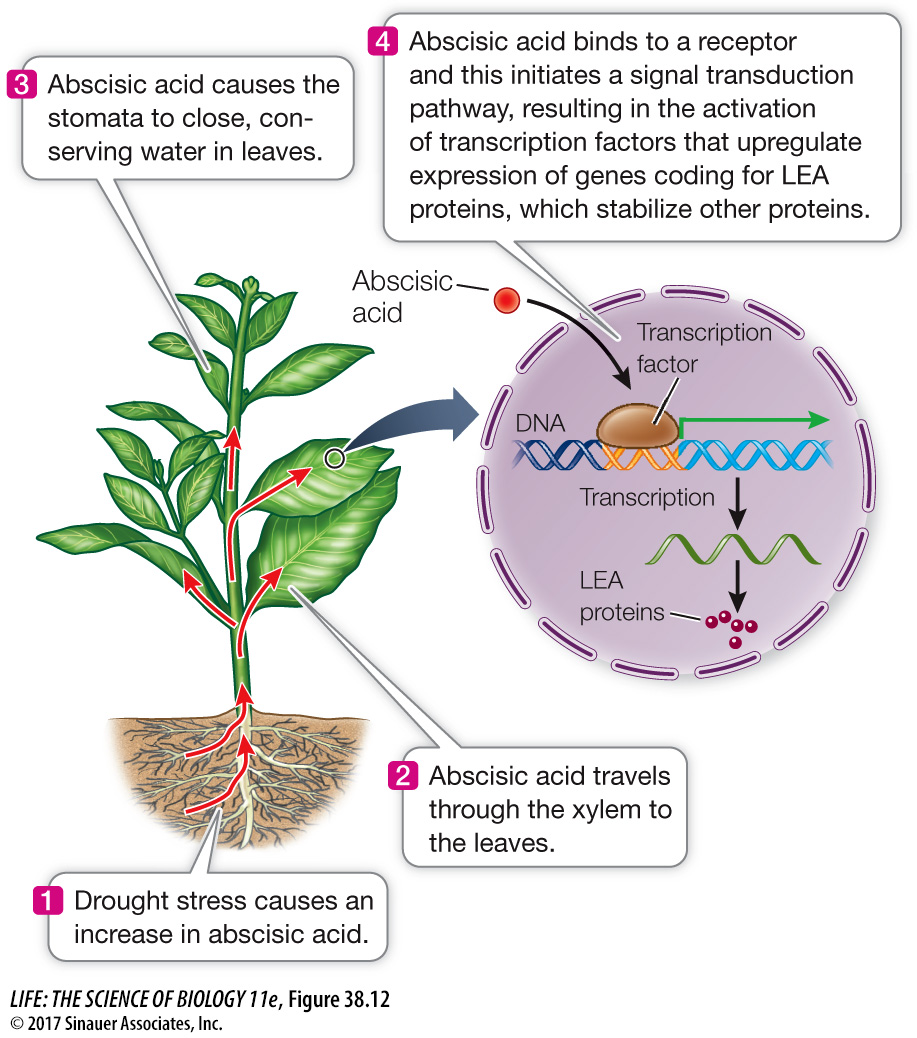Plants can respond to drought stress
The adaptations of xerophytes for coping with dry environments are generally constitutive—
When the weather is abnormally dry, the water content of the soil is reduced and less water is available to plants. Water deficits in plant cells have two major biochemical effects:
A reduction in membrane integrity as the polar–
nonpolar forces that orient the lipid bilayer are reduced Changes in the three-
dimensional structures of proteins
Plant growth is reduced when the structure of plant cells is compromised in these ways. Indeed, inadequate water supply is the single most important factor that limits production of our most important food crops.
When plants sense a water deficit in their *roots, a signaling pathway is set in motion that initiates several measures to conserve water and maintain cellular integrity. This pathway begins with the production of the hormone abscisic acid in the roots. This hormone travels from the roots to the shoot, where it results in stomatal closure and initiates gene transcription that leads to other physiological events that conserve water and cellular integrity (Figure 38.12).
*connect the concepts Understanding the concept of water movement into plant roots by osmosis is essential to understanding how plants cope with water stresses. See Key Concept 34.1.

Q: What genes do you think are stimulated by the LEA proteins?
LEA proteins might include chaperonins that bind to target proteins and stabilize them so that the targeted proteins remain in their active state, and other proteins that stabilize membranes and keep them from drying out.
Many plant genes whose expression is altered by drought stress have been identified, largely through research using DNA microarrays, proteomics, and other molecular approaches (see Chapters 17 and 18). One group of proteins whose production is upregulated during drought stress is the late embryogenesis abundant (LEA; pronounced “lee-